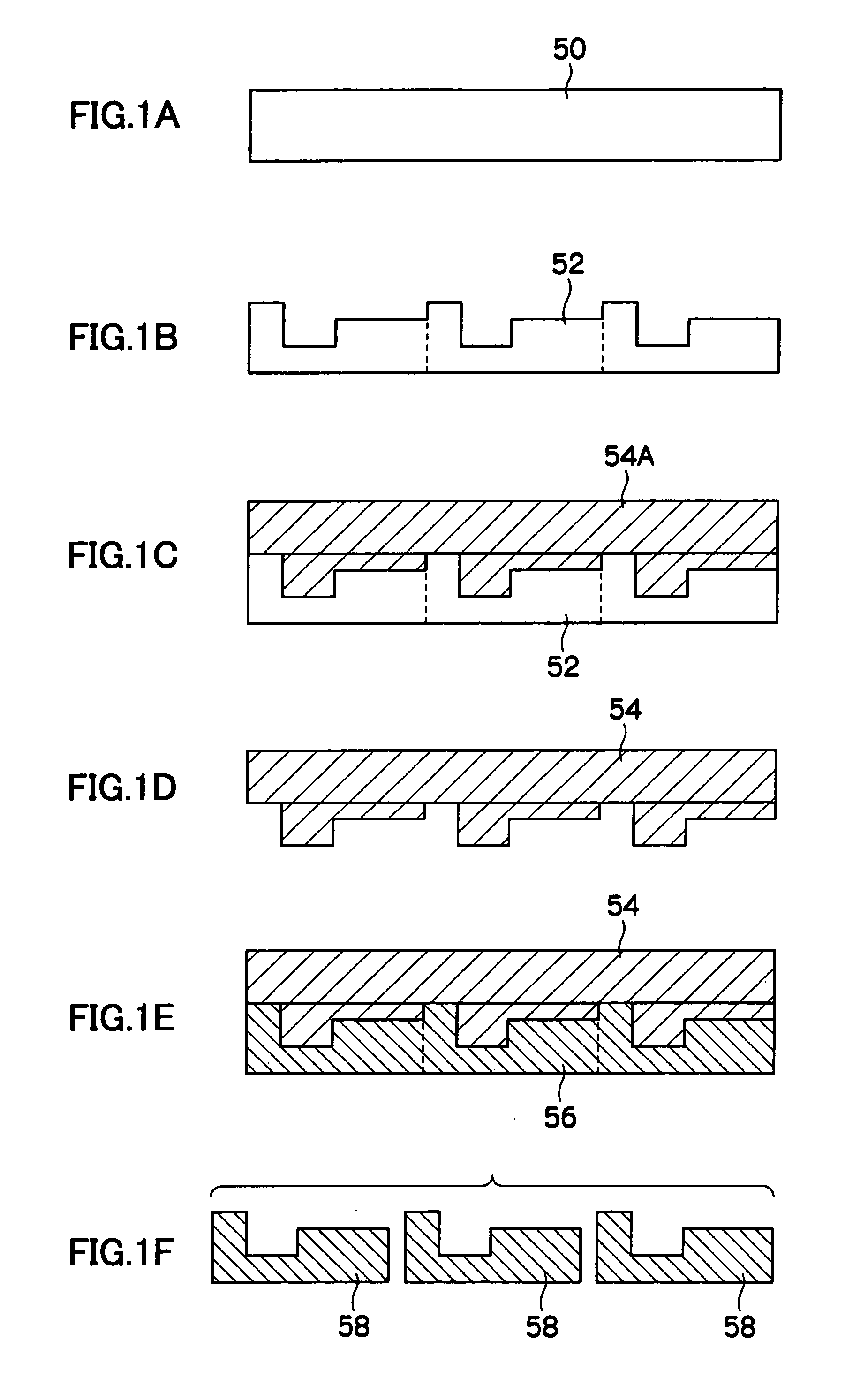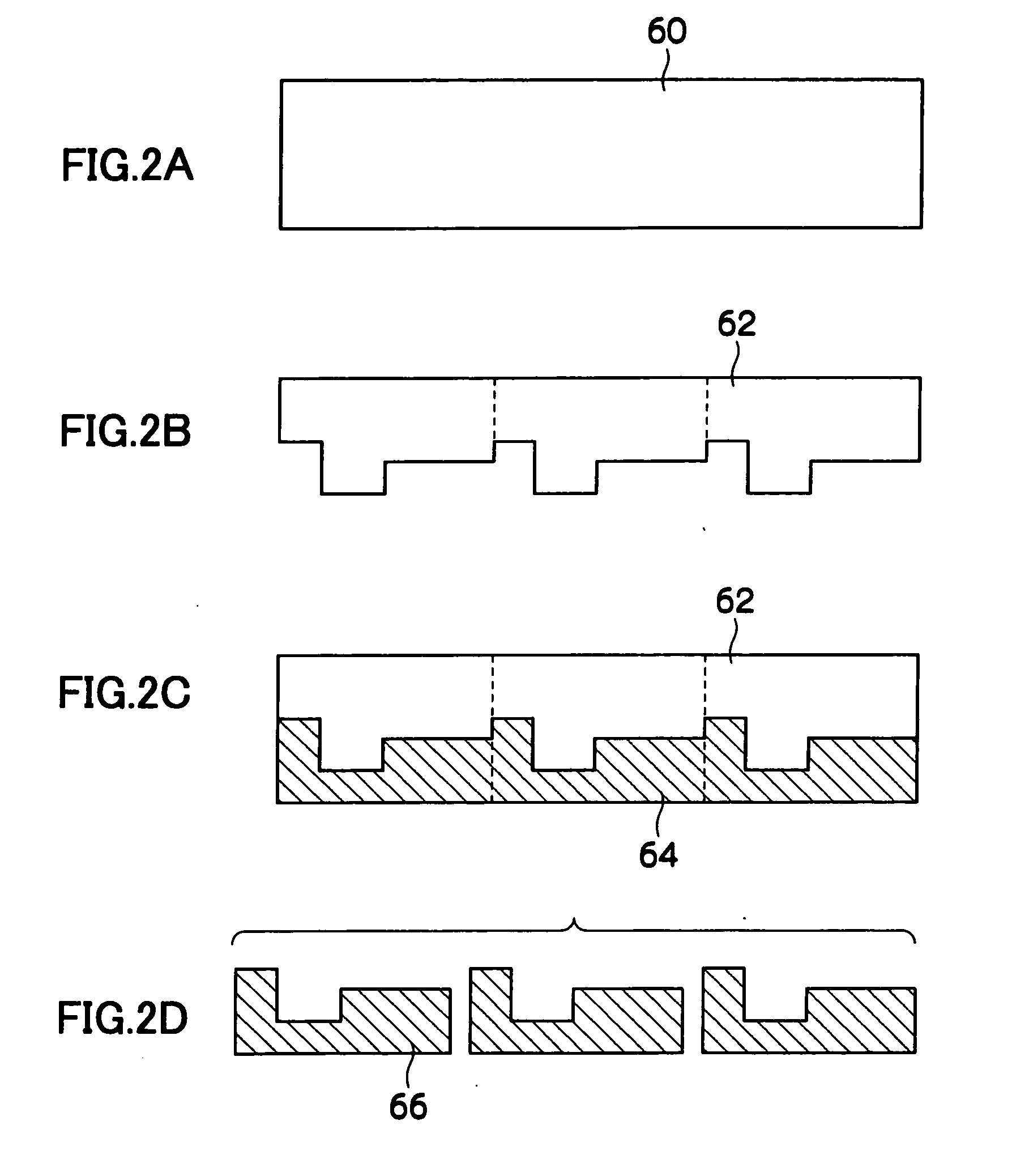Sub-mount for mounting optical component and light transmission and reception module
a technology for optical components and sub-mounts, applied in the direction of instruments, optical elements, optical waveguide light guides, etc., can solve the problem of large mounting cos
- Summary
- Abstract
- Description
- Claims
- Application Information
AI Technical Summary
Problems solved by technology
Method used
Image
Examples
example 1
[0150] Sub-mounts are produced with “Duplication Method using Silicone Resin” and the light transmission and reception module shown in FIG. 3 is produced.
[0151] (Production of Polymer Optical Waveguide Film)
[0152] After an Si substrate is coated with a thick film resist (trade name: SU-8, manufactured by Microchemical) according to a spin coat method, it is prebaked at 80 deg. C., is exposed through a photomask and is developed so that four projections having a quadrate section (width: 50 μm, height: 50 μm, length: 80 mm) are formed. Each gap between the projections is set to 250 μm. The Si substrate coated with the thick film resist is post-baked at 120 deg. C., so that a master plate for manufacturing a polymer waveguide is produced.
[0153] A releasing agent is applied on the master plate, and a mixture of thermosetting liquid dimethyl siloxane rubber (product name: SYLGARD184 manufactured by Dow-Corning Asia, viscosity 5000 mPa.s) and its hardening agent is poured in, and heate...
example 2
[0169] The sub-mount made of resin is produced through “Stamper Method”, and the light transmission and reception module shown in FIG. 3 is produced. The light transmission and reception module is produced using the method similar to Example 1 except that producing the sub-mount with “Stamper Method”.
[0170] (Production of Sub-Mount)
[0171] The master substrate made of Si is produced similar to Example 1. The master substrate is used as the stamper (mold) and the thermoplastic bulk molding compound (BMC) resin is adhered to the stamper, heated for two minutes under a pressure of 100 N and at a temperature of 250 deg. C., and thereafter, stood to cool to cure the epoxy resin. The cured layer is then stripped from the stamper, thereby producing the cured resin layer (thickness of mold: 5 mm), which surface includes projections and recesses corresponding to the projections and recesses of the stamper.
[0172] Next, after vapor depositing Au on the cured resin layer at a thickness of 200...
example 3
[0178] A sub-mount made of glass is produced through “Stamper Method”, and the light transmission and reception module shown in FIG. 3 is produced. The light transmission and reception module is produced using the method similar to Example 2 except that producing the sub-mount made of glass through “Stamper Method” using a metal die, as explained below.
[0179] (Production of Sub-Mount)
[0180] A die (a master substrate) made of Ni including a recess having a depth of 250 μm for mounting the light emitting element and the light detecing element, and a recess having a depth of 50 μm for mounting the polymer waveguide film is molded. Using the die as the stamper (mold), low melting glass (made from Sumita Optical Glass Inc., “K-PG375” (Vidron), Tg: 343 deg. C., Yielding point: 363 deg. C.) is adhered to the stamper, heated for five minutes under a pressure of 10 Pa and at a temperature of 375 deg. C., and thereafter stood to cool to cure the low melting glass. The cured glass layer is t...
PUM
 Login to View More
Login to View More Abstract
Description
Claims
Application Information
 Login to View More
Login to View More - R&D
- Intellectual Property
- Life Sciences
- Materials
- Tech Scout
- Unparalleled Data Quality
- Higher Quality Content
- 60% Fewer Hallucinations
Browse by: Latest US Patents, China's latest patents, Technical Efficacy Thesaurus, Application Domain, Technology Topic, Popular Technical Reports.
© 2025 PatSnap. All rights reserved.Legal|Privacy policy|Modern Slavery Act Transparency Statement|Sitemap|About US| Contact US: help@patsnap.com



